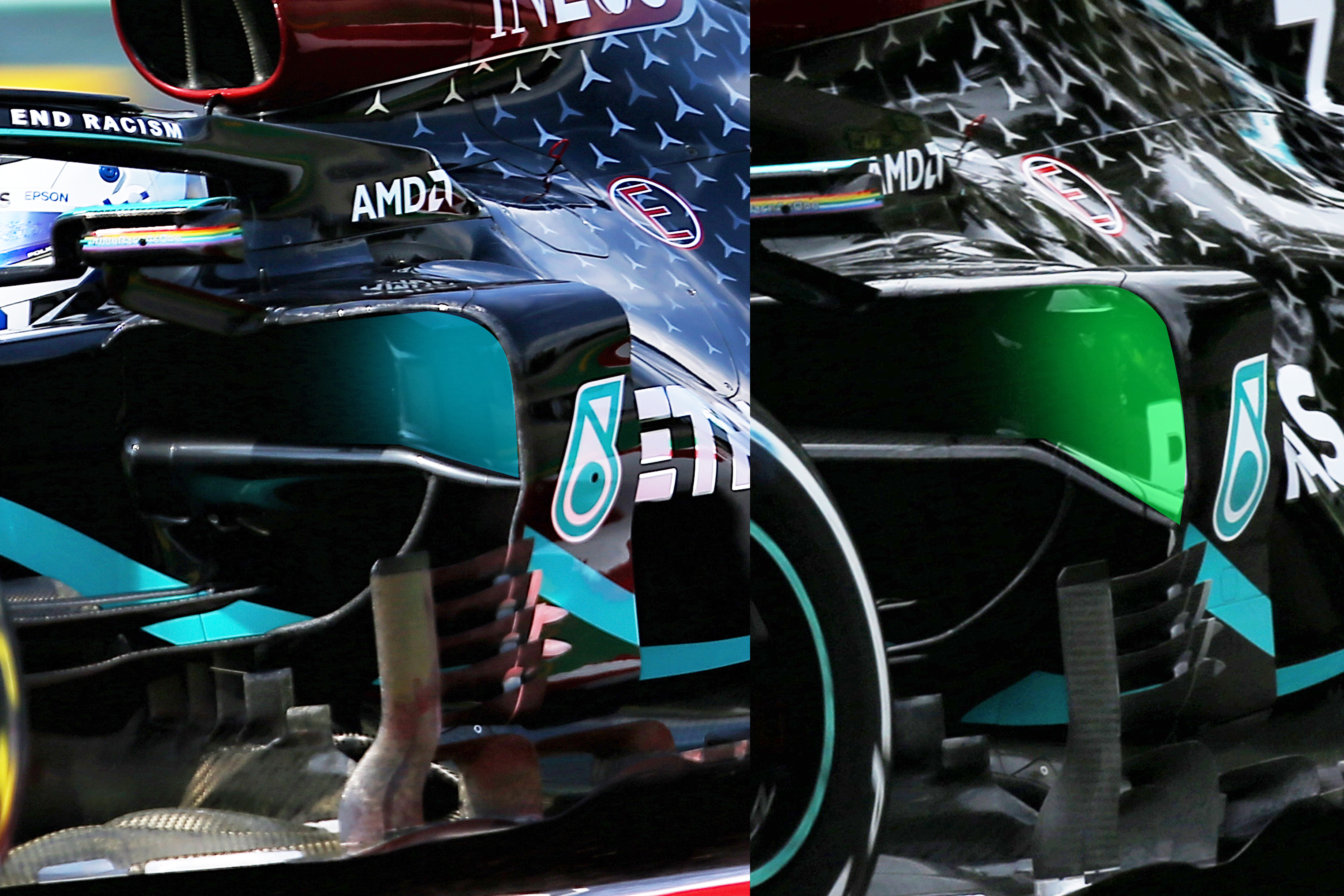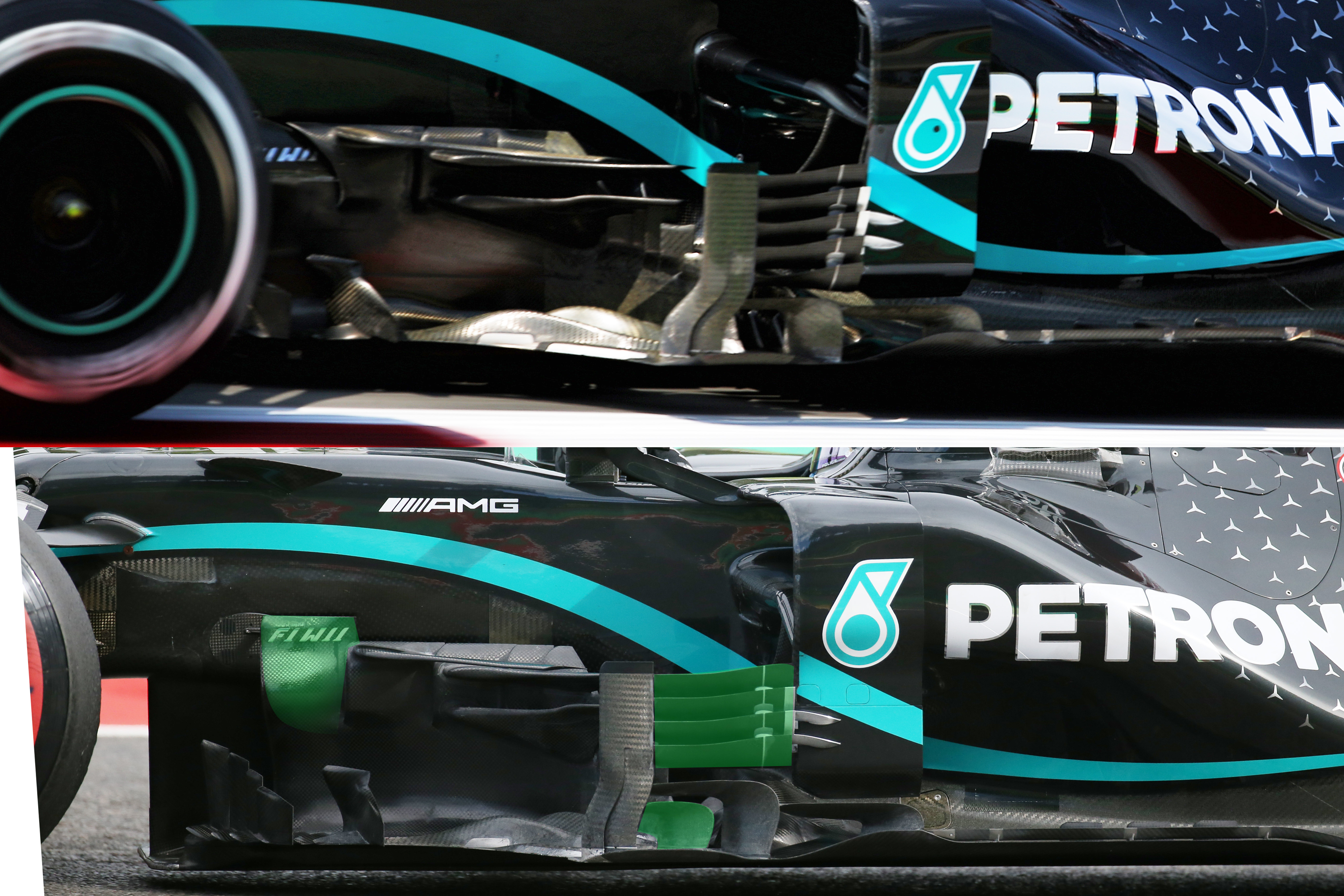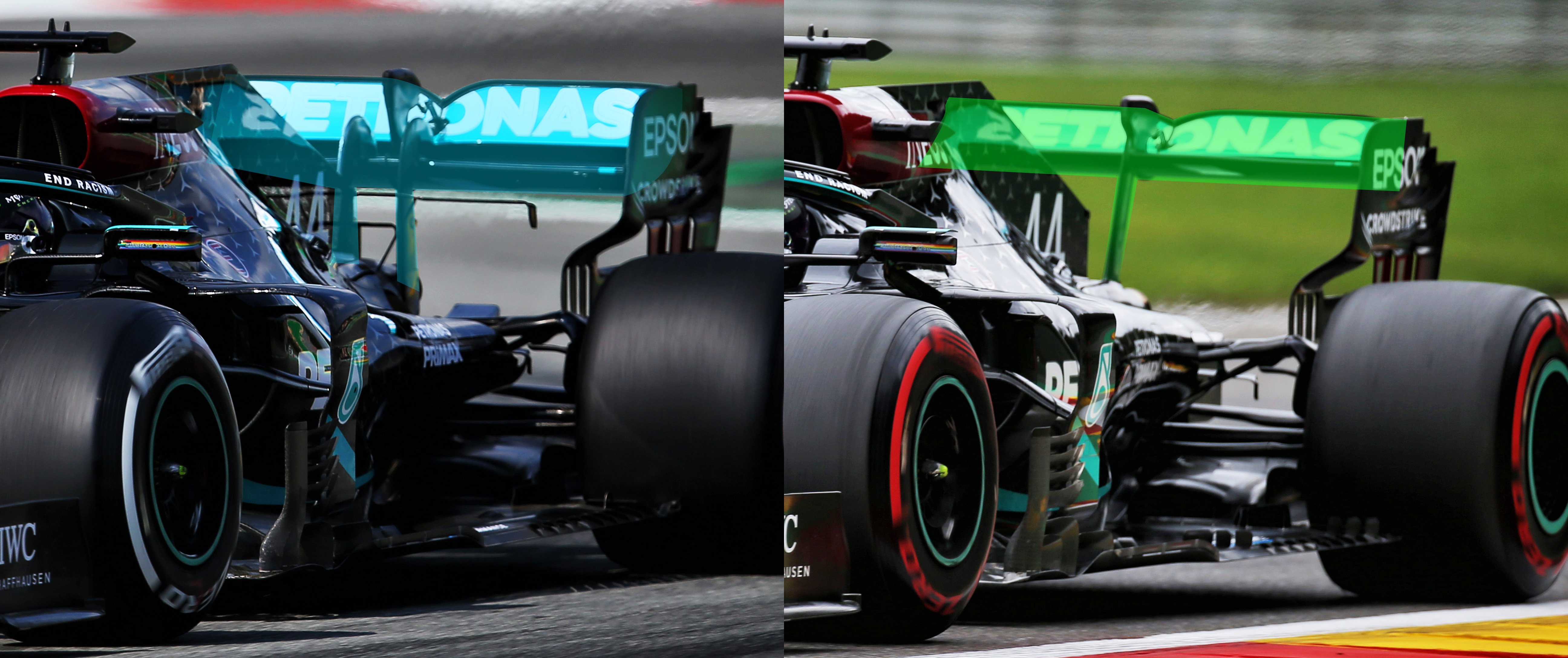The Mercedes Formula 1 team introduced a package of new bargeboards, turning vanes and sidepod shoulder vanes in Belgian Grand Prix Friday practice at Spa.
With current F1 cars, the devil is in the details. Things like the bargeboards are under constant review as if you alter a small item at the front of your car it has knock-on effects all the way back as far as the car that might be following you.
In our images below, the green highlights show the changes for Spa versus the blue shaded sections that show the Barcelona-specification parts.

The Mercedes the bargeboard area is one of the most complicated that I think I have ever seen.
It has turning vanes on turning vanes and it would be impossible for anyone outside the team to identify each of these individual components and actually explain what they individually do.
The overall workload of the bargeboard is to scavenge the airflow out from underneath the centre section of the chassis, and increase the speed of this airflow as much as possible for when it is introduced to the leading edge of the underfloor.
The turning vanes and fins etc all optimise this flow and separate the turbulent flow coming off the wake created by the front tyre. Some of the lower turning vanes also help to act as a skirt to seal the sides of the underfloor.

There are very few big returns from aerodynamic developments these days and if you think you can find one tenth of a second you have to evaluate that one tenth against the cost of doing it.
If this bargeboard change finds that one tenth then by the time you have the necessary moulds and all the parts required for spares there won’t be much change left out of half a million pounds.

Mercedes also introduced a Spa downforce level rear wing. Not only is the cross section of the rear wing elements smaller, the mounting system has also switched.
Where it used the twin-pillar mounting last time out at Barcelona, the new one has a single pillar. Fewer components in the airflow mean less disturbance to the underside of the wing, so overall it is more efficient.

